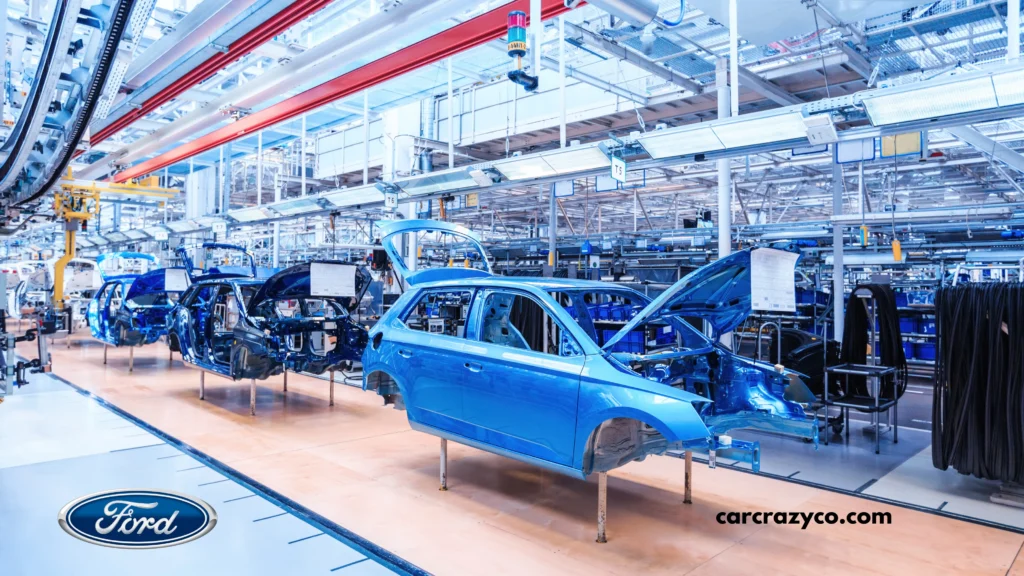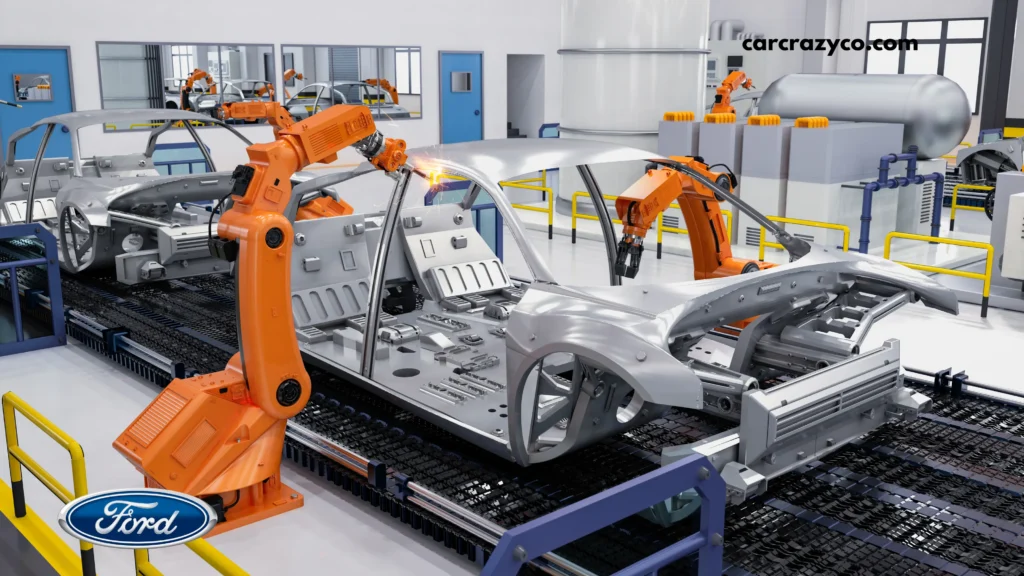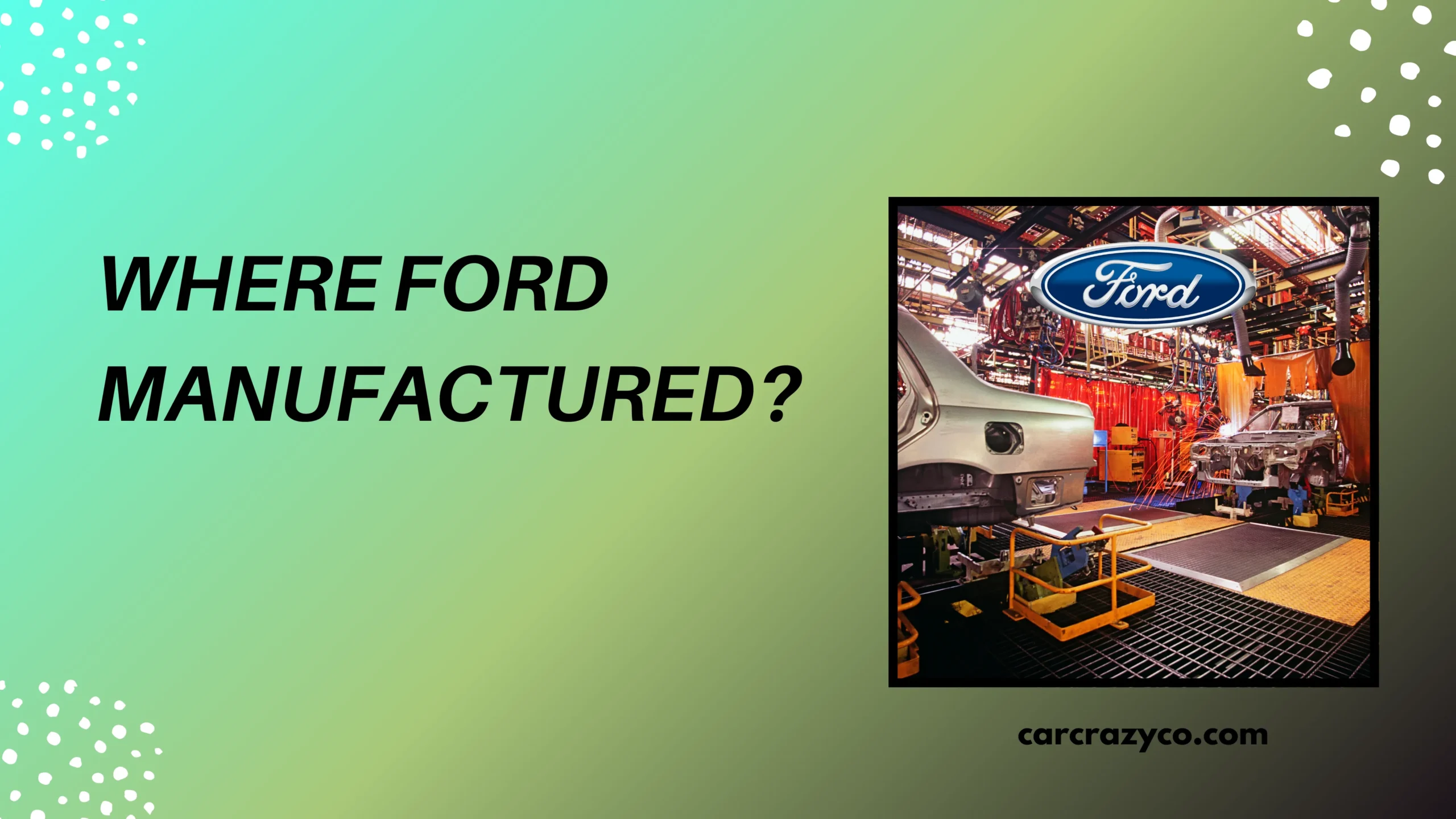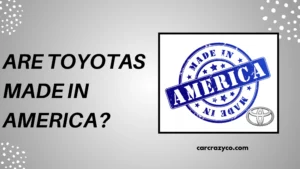The Ford Motor Company is more than just an American icon — it’s a global force in the world of automobile manufacturing. From its birthplace in Detroit to high-tech plants across multiple continents, Ford’s footprint is massive and strategic.
Understanding where Ford is manufactured offers insight into its quality, innovation, and the economic impact of its global production network. Every car, truck, and SUV carries with it a piece of international expertise and local craftsmanship.
Whether you’re driving an F-150 from Michigan, a Maverick from Mexico, or a Ranger from Thailand, your Ford is a product of decades of global planning. Let’s explore the countries, cities, and factories where Ford brings its vehicles to life.
Contents
1. United States – The Heart of Ford Production
Ford’s major U.S. plants include Dearborn (Michigan), Kansas City (Missouri), Louisville (Kentucky), and Chicago (Illinois). These locations build core models like the F-150, Super Duty, Explorer, and Mustang.
The U.S. remains Ford’s largest manufacturing hub, producing millions of vehicles with a focus on innovation, automation, and skilled labor. Ford also operates engine and transmission plants across the country.
2. Mexico – Compact Trucks and Cost-Efficient Production
Mexico is home to Ford’s plants in Hermosillo and Cuautitlán, building vehicles like the Maverick, Bronco Sport, and Mustang Mach-E. These sites help Ford manage production costs without sacrificing quality.
The proximity to the U.S. ensures smooth logistics and quick delivery. Despite being outside the U.S., these plants meet Ford’s global safety and performance standards.

3. Canada – Trucks and Engines with Precision
Ford’s key manufacturing site in Canada is the Oakville Assembly Plant in Ontario, known for building SUVs like the Ford Edge and Lincoln Nautilus. Canada also hosts several engine and part suppliers.
The Ford Windsor Engine Plant is especially important for producing powertrains. Canadian facilities are valued for their high-quality workforce and advanced engineering.
4. Europe – Global Design and Assembly Centers
Ford manufactures vehicles in Germany, Spain, Romania, and the UK, focusing on smaller cars, vans, and electric vehicles. The Cologne Plant in Germany now leads Ford’s EV transformation in Europe.
European plants focus on efficiency, emissions regulations, and designs suited for urban driving. These factories support Ford’s sustainability and electric vehicle goals.
5. Asia and South America – Meeting Regional Demand
In Thailand, Ford builds the Ranger and Everest for Asia-Pacific markets. India and China once played larger roles, but Ford has scaled back some operations in those regions.
Brazil and Argentina serve South America with models tailored to local markets. These regions help Ford remain competitive and adaptable in emerging economies.

Conclusion:
Ford’s manufacturing presence spans dozens of countries, with each plant serving a specific role in its global strategy. This approach allows Ford to balance cost, quality, and market demand effectively.
From the streets of Detroit to the factories of Thailand, Ford vehicles are made with a mix of local know-how and global innovation. Each model is a result of precision engineering and international teamwork.
Knowing where Ford is manufactured empowers buyers to appreciate the effort, scale, and legacy behind their vehicle. It’s not just about where it’s built — it’s about the craft behind the badge.
FAQs:
1. Where are most Ford vehicles made?
Most Ford vehicles are made in the United States, with key plants in Michigan, Missouri, Kentucky, and Illinois.
2. Is Ford still made in Mexico?
Yes, Ford manufactures the Maverick, Bronco Sport, and Mustang Mach-E in Mexico to serve North and South American markets.
3. Does Ford build cars in Canada?
Yes, Ford builds vehicles like the Edge and Lincoln Nautilus at the Oakville Assembly Plant in Canada.
4. Where are Ford electric vehicles made?
Ford EVs like the Mustang Mach-E are made in Cuautitlán, Mexico, while the F-150 Lightning is built in Dearborn, Michigan.
5. Are Ford vehicles made in Europe?
Yes, Ford builds smaller cars, vans, and EVs in Germany, Spain, Romania, and the UK, tailored to European standards.
6. Why does Ford manufacture globally?
Global manufacturing helps Ford lower production costs, access regional talent, and respond to local market needs efficiently.








